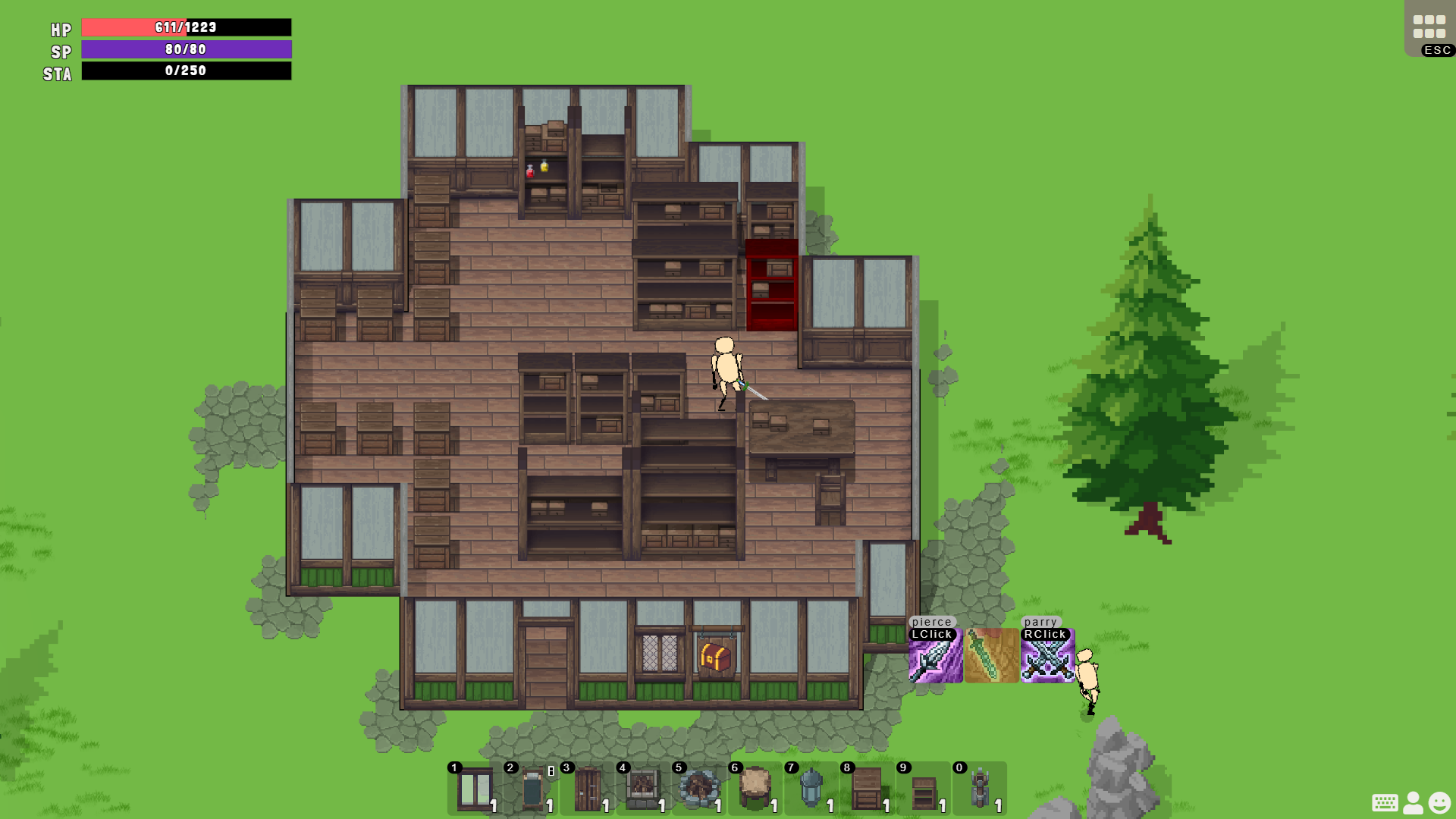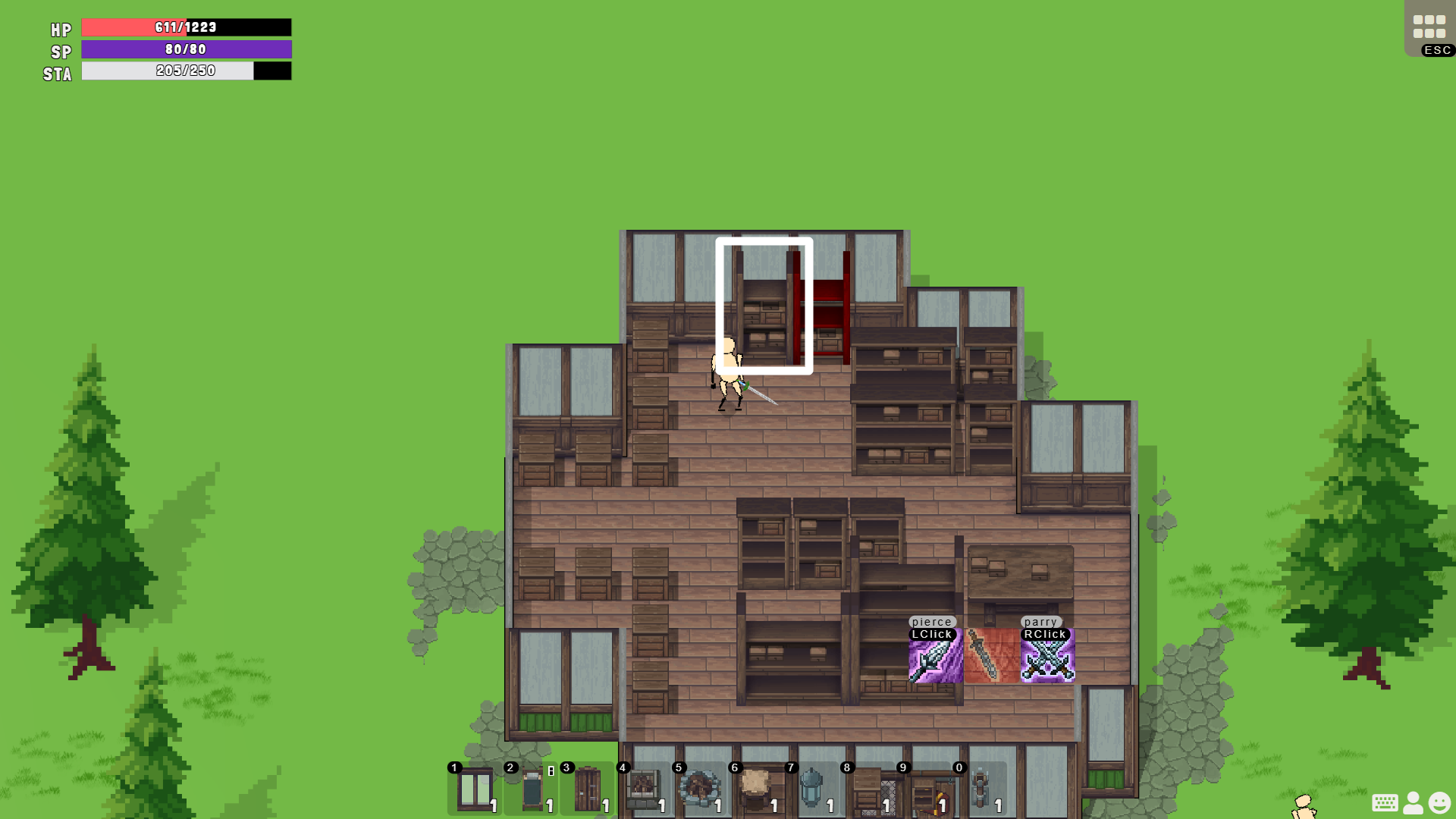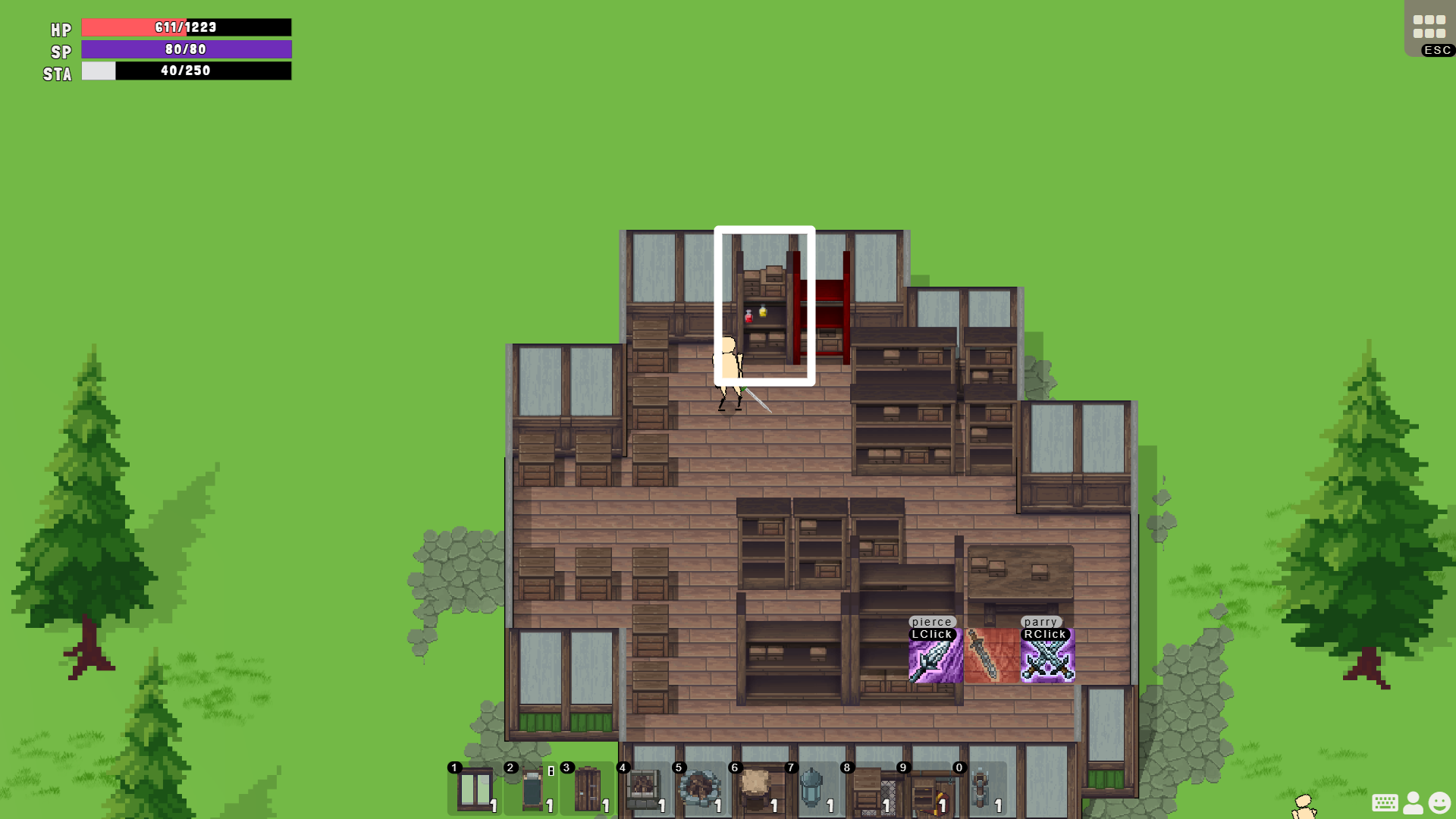Furniture visual detail2 min read

Game Development Log: Visualizing Stored Items in Furniture
Introduction
In my adventure-themed game, discovering and collecting items is a core and enjoyable feature. However, I noticed a common issue: static furniture sprites do not visually indicate the types or quantities of items stored within them. Without this distinction, players would need to check each piece of furniture individually to find items of interest. To solve this problem, I designed a rendering solution that works with the furniture actor's properties to visually represent the types and quantities of stored items.
Scope of the Solution
This system is only applied to furniture that can store items and is limited to types that do not fully conceal their contents, such as open shelves or tables. Furniture with doors or other obstructions are excluded from this feature.
Design Standards
To ensure consistency, I established a set of standards:
- Width Constraints: For furniture of the same width, the top layer of multi-layer cabinets and tables have no height restrictions, while the lower layers of multi-layer cabinets have height limits.
- Item Categories: Storable items are categorized into:
- Meat
- Wine
- Kitchenware
- Potion Bottles
- Books
- Packaged Boxes (a generic category for unsupported types)
Sprite Requirements
To support this system, a large number of sprites are needed to represent different widths and shapes (e.g., round tables, square tables, square cabinets). Currently, I have only created sprites for potion bottles and packaged boxes.
Density Representation
When players place, take, or split items, the system calculates the storage density based on the number of slots provided by the furniture and the number of slots occupied. The density is represented in five levels:
- 0%
- 25%
- 50%
- 75%
- 100%
These levels visually indicate how full each layer of the furniture is.
Results
The implementation has been successful. The visual indicators make it much easier for players to identify stored items at a glance, enhancing both usability and immersion.


Conclusion
By introducing a visual representation of stored items in furniture, I have addressed a significant usability issue in my game. This system not only improves the player experience but also adds a layer of depth to the game's exploration and collection mechanics.
游戏开发日志:家具中存储物品的可视化设计
引言
在我开发的冒险主题游戏中,发现和收集物品是一个核心且有趣的特性。然而,我注意到一个常见问题:静态的家具精灵(sprite)无法直观地展示其中存储的物品类型和数量。如果没有这种区分,玩家需要逐个检查每件家具才能找到感兴趣的东西。为了解决这个问题,我设计了一种渲染方案,结合家具 actor 的属性,来可视化展示存储物品的类型和数量。
解决方案的适用范围
该系统仅适用于可以存储物品的家具,并且仅限于那些没有完全遮盖内容的类型,例如开放式架子或桌子。带有门或其他遮挡物的家具不包含在此功能中。
设计标准
为了确保一致性,我制定了一套标准:
- 宽度限制:对于相同宽度的家具,多层柜子的顶层和桌子没有高度限制,而多层柜子的下层则有高度限制。
- 物品分类:可存储物品分为以下几类:
- 肉类
- 酒类
- 厨具
- 药剂瓶
- 书本
- 打包盒(用于不支持类型的通用类别)
精灵需求
为了支持这一系统,需要大量的精灵来表现不同的宽度和形状(例如圆桌、方桌、方形柜子)。目前,我只制作了药剂瓶和打包盒的精灵。
密度表示
当玩家放置、拿取或拆分物品时,系统会根据家具提供的格子数量和已占用的格子数量计算存储密度。密度分为五个等级:
- 0%
- 25%
- 50%
- 75%
- 100%
这些等级直观地表示每层家具的填充程度。
结果
该系统的实现非常成功。视觉指示使玩家能够一目了然地识别存储的物品,显著提升了可用性和沉浸感。


结论
通过在家具中引入存储物品的可视化表示,我解决了游戏中的一个重要可用性问题。该系统不仅提升了玩家的体验,还为游戏的探索和收集机制增添了更多深度。